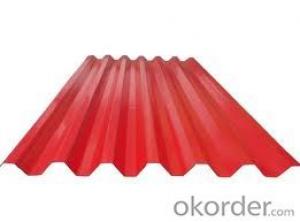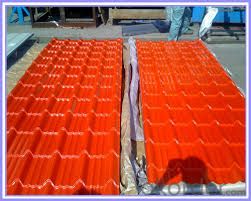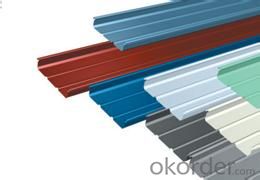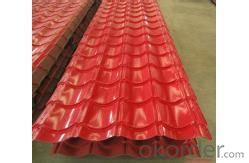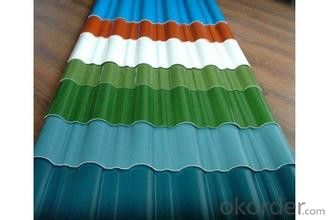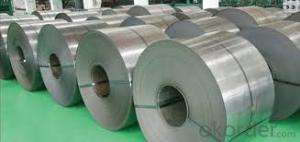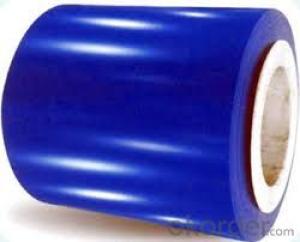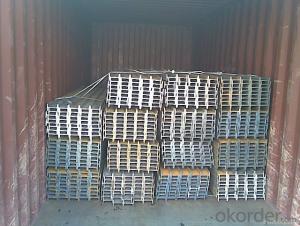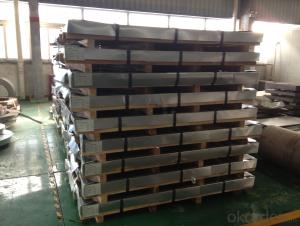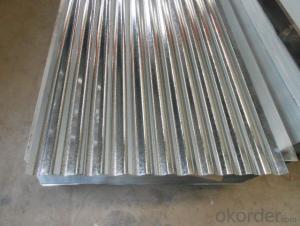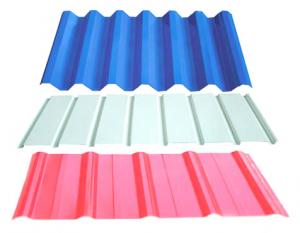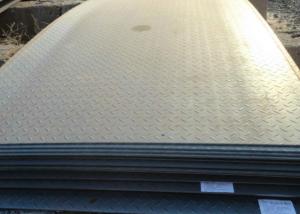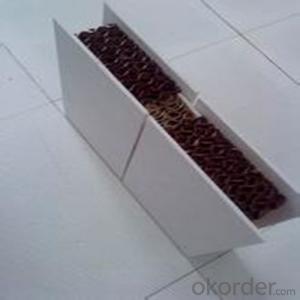Prepainted Galvanized Corrugated Steel plate :roofing sheet
- Loading Port:
- Tianjin
- Payment Terms:
- TT OR LC
- Min Order Qty:
- 30 m.t.
- Supply Capability:
- 500000 m.t./month
OKorder Service Pledge
OKorder Financial Service
You Might Also Like
Packaging & Delivery
| Packaging Detail: | Standard package for export |
| Delivery Detail: | 15 days after receipt the deposit or Original L/C |
Specifications
Prepainted roofing steel sheets
1. Thickness: 0.15mm---1.5mm
2. Width:800,900,1200,1220,1250mm
3.can be prepainted
Commodity | color coated galvanized steel plate |
Material | Galvanized steel sheet Galvalume steel sheet Pre-painted galvanized sheet |
Coating | PE,PVDF,galvanized(30-300g),galvalume (AZ80) |
Model No. | YX25-207-828 |
Sheet Thickness | 0.15---1.5mm |
Sheet Peak Height | 25mm |
Sheet Peak Spacing | 207mm |
Width | 800mm,900mm,1000mm |
Length | any length,according to the transportation,generally less than 12m |
Color | Standard color: red,blue,white grey Special color: according to RAL color |
Characteristic | 1 weatherproof 2 heating insulation 3 fireproof 4 anti-rust 5 sound insulation 6 long life span: more than 25 years
|
Packing | Plastic film,pallet or as your requests |
Delivery time | 15 days |
Payment | T/T,L/C |
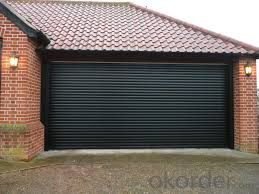
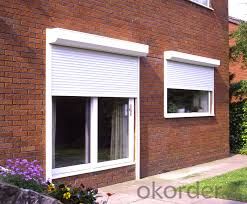
Images:
- Q: Are lead contained in galvanized steel plates and plain steel plates?
- According to the content of alloy elements, divided intoLow alloy steels (alloy elements less than 5%),Medium alloy steel (total alloy element is 5%-10%)High alloy steel (amount of alloying elements is higher than 10%).
- Q: What is the difference between the zinc plated color guide and the profiled steel sheet?
- Profiled steel sheet Yaxing, GangBan, English Name: profiled steel sheetRoof and wall panels are usually 0.4 to 1.6 millimeters thick and used for load-bearing slabs or silos with a thickness of 2~3 millimeters or more. The wave height generally ranges from 10~200 mm. When not reinforced, the ratio of height to thickness should be controlled within 200. When the long roof panel, the slope can be used from 2 to 5%, while the deflection is less than l/300 (L for the calculation of span length). At present, part of the waveform used in the construction is shown in Figure II, commonly used for profiled steel sheets.Because the original plate is very thin, the quality of the anticorrosive coating directly affects the service life of the profiled steel sheet. In order to meet the requirements of processing and rust prevention, the coated steel plate shall be examined in accordance with the relevant provisions. Under normal circumstances, thin steel plate can also be used according to the requirements, after pressing type, and then coated with anti rust paint, or use stainless steel sheet, the original plate.
- Q: What is the corrosion resistance of steel sheets?
- The corrosion resistance of steel sheets varies depending on the type of steel, its composition, and the environmental conditions it is exposed to. Generally, stainless steel sheets offer excellent corrosion resistance due to the presence of chromium, which forms a protective oxide layer on the surface. However, other types of steel sheets may be susceptible to corrosion if not properly treated or coated.
- Q: What is the average lifespan of a steel sheet roof?
- The average lifespan of a steel sheet roof can vary depending on various factors such as the quality of the material, installation technique, climate conditions, and maintenance. However, on average, a well-maintained steel sheet roof can last anywhere between 30 to 50 years.
- Q: Can steel sheets be used for walkways or platforms?
- Yes, steel sheets can be used for walkways or platforms. Steel sheets are commonly used in industrial and commercial settings due to their durability, strength, and resistance to various environmental factors. They can be fabricated and installed to create sturdy walkways or platforms that can withstand heavy foot traffic or even the movement of equipment and machinery. Steel sheets can also be customized to meet specific design requirements such as non-slip surfaces, raised edges for safety, or perforations for drainage. Additionally, steel sheets are relatively low maintenance and can be easily cleaned and maintained, making them an ideal choice for walkways or platforms in various applications including factories, warehouses, construction sites, and even outdoor areas.
- Q: Do the steel sheets have any specific certifications?
- The quality and compliance of the steel sheets are ensured through specific certifications. These certifications are typically granted by reputable organizations like the International Organization for Standardization (ISO) or specific regulatory bodies based on the country or region. The common certifications for steel sheets include ISO 9001 for quality management systems, ISO 14001 for environmental management systems, and ISO 45001 for occupational health and safety management systems. Furthermore, there might be industry-specific certifications, such as the American Society for Testing and Materials (ASTM) standards or the European Committee for Standardization (EN) certifications. These certifications guarantee that the steel sheets meet specific criteria for various attributes, including material composition, mechanical properties, and manufacturing processes.
- Q: How do I print the steel plate?
- It's not print. It was corrosion first. It's laser engraving. Now it's 20 watts above the laser to carve the metal
- Q: Are steel sheets resistant to vibration or shaking?
- Yes, steel sheets are generally resistant to vibration or shaking due to their stiffness and high tensile strength.
- Q: Can steel sheets be recycled multiple times?
- Yes, steel sheets can be recycled multiple times without losing their properties or quality. Steel is a highly recyclable material that can be melted down and reused repeatedly, making it an environmentally sustainable choice.
- Q: What are the different bending radius options for steel sheets?
- The bending radius possibilities for steel sheets can differ based on the thickness and type of steel used. In general, the bending radius for steel sheets ranges from 0.5 to 2 times the sheet thickness. For thinner sheets, such as those measuring 0.5mm to 2mm in thickness, it is typically advised to use a bending radius of 0.5 to 1 times the sheet thickness. This allows for a tighter bend without risking the steel cracking or deforming. For thicker sheets, like those measuring 2mm to 6mm in thickness, it is common to utilize a bending radius of 1 to 1.5 times the sheet thickness. This ensures that the steel retains its structural integrity and prevents excessive stress or strain during the bending process. For even thicker sheets, usually above 6mm in thickness, a bending radius of 1.5 to 2 times the sheet thickness is often necessary. This larger bending radius helps prevent any potential damage or distortion to the steel, ensuring a successful bending operation. It is important to note that these bending radius options are general guidelines and may vary depending on the specific grade, composition, and intended application of the steel. It is always recommended to consult the manufacturer's recommendations or seek expert advice when determining the appropriate bending radius for steel sheets.
Send your message to us
Prepainted Galvanized Corrugated Steel plate :roofing sheet
- Loading Port:
- Tianjin
- Payment Terms:
- TT OR LC
- Min Order Qty:
- 30 m.t.
- Supply Capability:
- 500000 m.t./month
OKorder Service Pledge
OKorder Financial Service
Similar products
Hot products
Hot Searches
Related keywords
